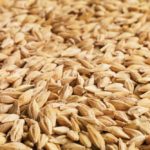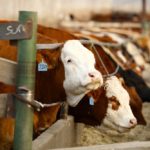
Tag Archives cattle markets

The similarities between 2009 and 2020
Market Talk with Jerry Klassen
The U.S. and Canadian economies suffered the worst year-over-year contraction in GDP in history during the second quarter of 2020. U.S. GDP contracted at 32.9 per cent on an annual basis during the second quarter; the official Canadian data at the time of writing this article was not yet released but analysts expect the drop […] Read more

Fed-cattle prices moving higher
The Markets with Deb McMillin, from the September 2020 issue of Canadian Cattlemen
Fed cattle Impressive summer slaughter rates coupled with strong wholesale demand have moved fed prices higher after weeks of a steady trading range. The fed steer price in Alberta in mid-August was $136.92/ cwt, which was a jump of $2.81/cwt from the previous week. Cash-to-cash basis is narrow at -$1.47/cwt, which compares to -$3.39/cwt a […] Read more

Klassen: Yearling market remains red hot
Barley harvest well underway in southern Alberta
Compared to last week, western Canadian yearling prices were $2-$4 higher on average; however, in southern Alberta, yearlings traded $6-$8 above week-ago levels. A few auction barns in Alberta held their first feature sales of the fall run and buyers showed up with both hands. The quality of yearlings coming off grass is excellent and […] Read more

Klassen: Weaker feed grains drive feeder market higher
Compared to last week, western Canadian yearlings traded $2-$4 higher. This was the first week of the fall yearling run with larger groups of quality packages and there was no shortage of buying enthusiasm. Heavier yearlings were readily trading at 52-week highs. Feed barley prices collapsed in southern Alberta as the harvest started in the […] Read more

Fed cattle market rebounds after hitting near-decade lows
The Markets with Deb McMillin, from the August 2020 issue of Canadian Cattlemen
Fed cattle After hitting lows not seen since 2012 in May, the fed cattle market has rebounded over the last several weeks. Two weeks after sinking to a low of $107/cwt in early May, the market recovered, climbing $41/cwt to a weekly average of $148/cwt. Since May the market trended lower through June but has […] Read more

Klassen: Feeder market in summer mode
Set-aside program not having much effect yet on prices
Compared to last week, western Canadian feeder cattle prices were relatively unchanged. Volumes are quite thin at this time of year, which makes the market hard to define. Steady demand surfaced on quality groups of yearlings and calves, while late stragglers and heavier-flesh feeders were severely discounted. Pasture conditions are favourable across the Prairies and […] Read more

Cattle pricing during an economic crisis
Society has not yet discovered a better pricing mechanism than a free and open marketplace and is not likely to do so. Price signals the public demand for the product, with high prices signalling the demand for more, and the converse. Does this mean that one should never seek to override price signals that are […] Read more

Weekly slaughter levels lowest in decades
The Markets with Deb McMillin, from the June 2020 issue of Canadian Cattlemen
Fed cattle This spring, weekly slaughter levels were nearly 60 per cent lower than a year ago and the lowest recorded since 1973. From mid-March to the first week of May, the cash market dropped $50.56/cwt to reach a low of $107.00/cwt. Although volumes are light, losses on cattle sold into this lower-cash market are […] Read more

COVID-19’s continuing chaos
Prime Cuts with Steve Kay
As I write this on April 6, the April live cattle futures contract here in the U.S. has closed down its 450-point extended daily limit for the fourth day in a row. The contract closed at US$83.82 per cwt, thus losing 1,800 points in those four days. In contrast, the contract settled on February 21 […] Read more

Marketing game plan crucial in uncertain times
Here’s how to craft marketing tactics to manage risk and fatten your profit margin
Beef producers face many uncertainties, from weather to market fluctuations. Profit margins are thin or even negative. All that risk and uncertainty can make it difficult to develop a good marketing plan or know when to tweak marketing strategies. But unexpected events are one reason producers need a good plan, says Anne Wasko, a market […] Read more



